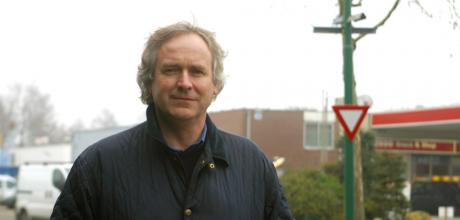Motorsport World mourns the passing of race engineer, Wiet Huidekoper
With great sadness, the family of Louis ‘Wiet’ Huidekoper announced his passing on Saturday 7th January. Born in Bussum, the Netherlands, on the 29th October 1953, he was a talented creator, always drawing and making the things he needed. This skill was no more evident than with his moped, which should have been limited to a top speed of 40 km/h, but after some serious weight reduction and streamlining measures, the young Wiet was able to coax the two-wheeler up to a speed of 90 km/h.
His love of all things motoring began shortly after his sixth birthday, when he was allowed to steer the Huidekoper family car along his grandparent’s long driveway. By the time of his twelfth birthday, Wiet could drive, and so the hunger to know more about the mechanical workings of automobiles continued to grow. He attended the 1970 Dutch Grand Prix and witnessed the untimely death of Piers Courage first-hand, but his overriding memories of that race concerned the speed of the Formula One machines he witnessed.
In 1982, he built his own Formula Ford, the Chinell FF1600, which achieved notable successes in the 1983 season. As a result, Wiet spent the next few years contracted to Royale and Reynard before being commissioned to design and build a Sports 2000 racer for a Dutch team. Wiet’s Vector Sports 2000 achieved a maiden victory and many more race wins in 1985.
He followed these accomplishments with several years of race engineering, helping numerous teams to improve their cars. In 1989, for example, he helped Chamberlain Racing to win the Group C2 title with their Spice SE89C, an achievement leading to Wiet designing and building the Lola T9210, which entered Group C in 1992. The lure of creating another Formula Ford racer with good friend, Chris Fox, resulted in the TF93, and after a promising season in 1993, the car won the 1994 championship.
With his reputation growing, Wiet was approached by Porsche to help with preparation of the controversial Dauer 962 GT LM, which won the 24 Hours of Le Mans in 1994. Further work with Porsche resulted in another Le Mans victory in 1998, when the number twenty-six 911 GT1-98 took top honours with Laurent Aïello, Allan McNish and Stéphane Ortelli sharing driving duties.
As the new millennium dawned, Wiet returned to what he enjoyed doing best: race engineering and designing. Projects included the redesign of the Marcos LM600 Evo, Dallara Chrysler LMP1 and further work for Lola on a track day car. Away from the circuit, he loved classic sports cars and spent much time touring in his Austin-Healey 100 and his Jaguar E-Type. In his later years, he designed and developed a lightweight-but-robust carbon-fibre racing wheel rim.
Always one of the first to arrive on the job and the last to leave at night, Wiet’s ability to analyse a problem and to come up with a solution under pressure is what set him apart from many in the paddock. Despite preferring to remain somewhat in the background, he touched the lives of many and was quick to commend someone when they did well.
At the time of his death, brought on by complications arising from a stroke in 2018 and an irreversible infection caught at the start of this year, Wiet was in the process of working with his established foundation (Foundation Wiet Design) in compiling a biography of his life and achievements. His loss will be deeply felt, but the work to complete this project will continue in his honour.
Wiet will be sorely missed by his family and friends, and the racing paddock is all the poorer for his passing. Everybody at Classic Porsche wishes his loved ones and colleagues comfort at this difficult time.
HIS ABILITY TO ANALYSE A PROBLEM AND TO COME UP WITH A SOLUTION UNDER PRESSURE IS WHAT SET HIM APART FROM MANY IN THE PADDOCK


